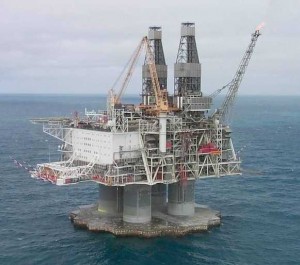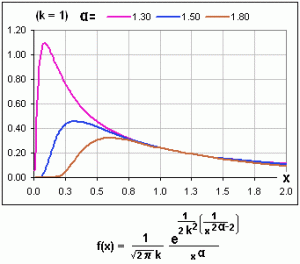Quiksilver has Heavy Debt-al Poisoning
Since I last proposed Callon Petroleum bonds, and following my success with the Bon-Ton junk bonds, I’ve been considering focusing more attention on this part of the market. Junk bonds, of course, offer massive yields, higher than nearly all dividend-paying stocks and certainly higher than normal bonds; however, defaults are a constant worry and the possibility of bankruptcy adds an exciting new aspect to investing. Moyers, in his Distressed Debt Analysis, warns that the small investor faces structural disadvantages as well, since bonds tend to trade blocks of hundreds of thousands of dollars at a time so the small investor has to pay a horrible spread. I suppose one correct call with Bon-Ton does not a guru make, but the more inefficient a market is, and particularly after the horrific price declines during that golden moment when the original purchasers realize for the first time that they’re holding junk, the more opportunities are available.
 At any rate, consider Quiksilver, which makes clothes. Like so many companies, they have profitable operations but no actual profits because they are a friend of debt. But debt is not returning the favor. Of course, the acceptable debt level for a firm varies; the debt level that a utility would find quite bearable would strangle a manufacturer, for example, but when operating income is consumed entirely by interest payments and the shareholders get hardly anything, there is too much debt to make the equity look attractive. Of course, the academic financiers have argued that in an environment with income taxes and no defaults the optimum capital structure is 100% debt, and this discovery was apparently viewed as some sort of grand discovery on par with splitting the atom, although in terms of usefulness they may as well have told us what the optimum capital structure would be if the CEO were a unicorn (although this principle might explain why AIG is trading at a price above zero).
At any rate, consider Quiksilver, which makes clothes. Like so many companies, they have profitable operations but no actual profits because they are a friend of debt. But debt is not returning the favor. Of course, the acceptable debt level for a firm varies; the debt level that a utility would find quite bearable would strangle a manufacturer, for example, but when operating income is consumed entirely by interest payments and the shareholders get hardly anything, there is too much debt to make the equity look attractive. Of course, the academic financiers have argued that in an environment with income taxes and no defaults the optimum capital structure is 100% debt, and this discovery was apparently viewed as some sort of grand discovery on par with splitting the atom, although in terms of usefulness they may as well have told us what the optimum capital structure would be if the CEO were a unicorn (although this principle might explain why AIG is trading at a price above zero).
Getting back to Quiksilver, based on their current results virtually all their earnings are eaten up by interest and I am not convinced this situation is purely temporary, so obviously the equity of the firm cannot have any realistic margin of safety. However, the same was true of Bon-Ton stores. However, there is one worrisome aspect of Quiksilver versus Bon-Ton stores and that is on the balance sheet. Specifically, both of them have a senior secured bank line of credit that ranks ahead of its bonds. Although Ben Graham writes in Security Analysis that a bond investor is protected by the quality of the company rather than security interests and assets pledged, he was talking about investment grade bonds. Here, asset backing is probably worth a little attention in case something happens like being forced into bankruptcy.
In the case of Bon-Ton, the trade creditors (who in a bankruptcy are customarily given priority because their continued business is vital to the firm) and the secured credit together total a little more than the current assets, leaving the property, fixtures, and equipment available to cover the bonds. So, although this neglects asset shrinkage which often accompanies a bankruptcy, the fact is that $750 million in plant and equipment were available to supply a $600 million bond issue that was selling for less than $300 million when I posted the article (and actually dropped to $66 million at some point during the lifetime of the bonds).
 But in the case of Quiksilver, the senior notes are also unsecured, and they also have a secured line of credit of up to 320 million in Europe, a 150 million privately placed note, also secured, and 20 million secured on a US line of credit, on which they have another 180 million available (which does give confidence in Quiksilver’s ability to ride out a further weak patch in the economy, but if they fail to do so it’s just that much more debt in line ahead of the bonds). So, about 500 million in secured debt are in line ahead of the notes, and on top of another 220 million in trade credit and some other debts, there are, say, 750 million in higher priority debts over the bonds, which eats up nearly all of their cash, receivables, and inventories. What remains is 75 million in current assets, 237 million in plant and equipment, and so the remaining 87 million in bonds is left to look to intangibles, goodwill, and “other.â€
But in the case of Quiksilver, the senior notes are also unsecured, and they also have a secured line of credit of up to 320 million in Europe, a 150 million privately placed note, also secured, and 20 million secured on a US line of credit, on which they have another 180 million available (which does give confidence in Quiksilver’s ability to ride out a further weak patch in the economy, but if they fail to do so it’s just that much more debt in line ahead of the bonds). So, about 500 million in secured debt are in line ahead of the notes, and on top of another 220 million in trade credit and some other debts, there are, say, 750 million in higher priority debts over the bonds, which eats up nearly all of their cash, receivables, and inventories. What remains is 75 million in current assets, 237 million in plant and equipment, and so the remaining 87 million in bonds is left to look to intangibles, goodwill, and “other.â€
Now, intangible assets are not the same thing as nonexistent assets; they do represent capital and a source of excess returns, but the problem is that they are much harder to appraise, round up, and sell off. Of course, the $400 million in bonds is now just a hair over $300 given the bonds’ current price of 76 cents, but even without asset shrinkage there is no margin of safety in the bond purchase, unlike the $450 million in bond safety available from buying the Bon-Ton bonds at a price of under 50.
Yes, when junk bond investing, it is entirely possible to have to ride out a Chapter 11, which does itself only come after some truly buttocks-clenching drops in prices. So the reason you have to consider what piece of the firm is represented by your bonds is because there is not a trivial possibility that it will become an issue. And, of course, during the Chapter 11 itself interest on bonds is frequently suspended, especially for unsecured bonds. The reason to figure out security interests as well as priority in a Chapter 11 is because, even though secured creditors can be prevented from actually repossessing and selling their collateral, they are entitled to force the company to take steps to protect their secured property, including calls for additional payment, providing a lien on replacement assets (which is almost always done for inventory when it is sold and new inventory purchased, but they could even give a creditor with inventory as collateral an interest in the property and plant), and several other methods.
 So, how did it come to pass that Bon-Ton’s bonds are backed by more assets than those of Callon Petroleum and Quiksilver? I think part of it might be the nature of the bonds. Bon-Ton’s bonds were issued in order for them to complete a large, expansionary acquisition, and the market realized the speculative nature of that expansion by giving them an interest rate of 10.125%. In other words, the bonds were junk and then became junkier. Callon’s bonds were perfectly well secured until falling oil prices and a couple of hurricanes caused them to take a huge writeoff, and even so their coupon was 9.75% representing the riskiness of the oil development in the Gulf of Mexico. Quiksilver’s bonds, though, were issued with a coupon of 6.875%, which is not indicative of junk and suggests that the company was considered a reasonably safe issuer that has suffered some deterioration over time, so their creditors were clearly not thinking about bankruptcy at all when they purchased the bonds.
So, how did it come to pass that Bon-Ton’s bonds are backed by more assets than those of Callon Petroleum and Quiksilver? I think part of it might be the nature of the bonds. Bon-Ton’s bonds were issued in order for them to complete a large, expansionary acquisition, and the market realized the speculative nature of that expansion by giving them an interest rate of 10.125%. In other words, the bonds were junk and then became junkier. Callon’s bonds were perfectly well secured until falling oil prices and a couple of hurricanes caused them to take a huge writeoff, and even so their coupon was 9.75% representing the riskiness of the oil development in the Gulf of Mexico. Quiksilver’s bonds, though, were issued with a coupon of 6.875%, which is not indicative of junk and suggests that the company was considered a reasonably safe issuer that has suffered some deterioration over time, so their creditors were clearly not thinking about bankruptcy at all when they purchased the bonds.
So, although the massive writedowns of Quiksilver’s discontinued operations seem to have abated since the first quarter of this year, I’m not convinced that at this price the bonds represent an appropriate margin of safety, and with a current yield of 9% it’s not as if there aren’t better yields available elsewhere. But it never hurts to brush up on distressed and junk bond analysis, because sometimes in addition to getting all the earnings of a company, a skilled distressed debt investor can get a good piece of the company (which is to say, a piece of a good company) itself as a consolation prize from the Chapter 11.
 However, it seems to me that this acquisition is unlike the other three purchases. In those cases, the price paid, if you indulged management’s optimism about synergies, and taking into account the excess of depreciation over capital expenditures, you still wound up with a price/free cash flow of around 10. Here, Windstream claims that about 8% of the purchase price consists of tax loss harvesting (which the Tax Code has very Byzantine rules about, but for 8% it is not the driver of the transaction so I wouldn’t be too worried).  But of the other 92%, I find that net income plus depreciation minus capital expenditures comes to an average about 50 million a year, which, given the $530 million paid for the equity is close to 10 but not quite there.
However, it seems to me that this acquisition is unlike the other three purchases. In those cases, the price paid, if you indulged management’s optimism about synergies, and taking into account the excess of depreciation over capital expenditures, you still wound up with a price/free cash flow of around 10. Here, Windstream claims that about 8% of the purchase price consists of tax loss harvesting (which the Tax Code has very Byzantine rules about, but for 8% it is not the driver of the transaction so I wouldn’t be too worried).  But of the other 92%, I find that net income plus depreciation minus capital expenditures comes to an average about 50 million a year, which, given the $530 million paid for the equity is close to 10 but not quite there. However, the majority of junk bonds are junk for a reason, and they require careful screening. Consider the bonds of Callon Petroleum Co., which pay 9.75% and are trading at 60, currently yielding 16%. They fall due in December of 2010, but most of those bonds will never be redeemed, because the firm was forced to institute a tender offer because what with two hurricanes and a drop in the price of oil they were forced to discontinue a large operation in the Gulf of Mexico. Their other operations are barely able to cover their interest. The terms of the
However, the majority of junk bonds are junk for a reason, and they require careful screening. Consider the bonds of Callon Petroleum Co., which pay 9.75% and are trading at 60, currently yielding 16%. They fall due in December of 2010, but most of those bonds will never be redeemed, because the firm was forced to institute a tender offer because what with two hurricanes and a drop in the price of oil they were forced to discontinue a large operation in the Gulf of Mexico. Their other operations are barely able to cover their interest. The terms of the  Indexing, long touted as the safe long-term option for the passive investor, has shown itself to be riskier than we all imagined, producing a negative 10-year return. If stocks always beat bonds over the long term, claim the authors of Dow 36000, then they are in fact less risky than stocks and thus the Dow deserves to be at 36000. If, however, they are more risky, then the index fund industry has some explaining to do.
Indexing, long touted as the safe long-term option for the passive investor, has shown itself to be riskier than we all imagined, producing a negative 10-year return. If stocks always beat bonds over the long term, claim the authors of Dow 36000, then they are in fact less risky than stocks and thus the Dow deserves to be at 36000. If, however, they are more risky, then the index fund industry has some explaining to do. It is disturbing, though, that the regulators still embrace value at risk, which assesses the risk of loss on a financial asset by applying a stochastic process based on volatility that has been observed over a certain period, typically less than five years. Of course, the five years before 2008 were extremely boring in terms of volatility. Value at risk could perhaps be preserved if the period surrounding the collapse of Lehman Brothers was used as representative, but it would be quicker to abandon the stochastic myth, since security prices stop behaving as though they follow a stochastic process just about when panic strikes and every market participant wants them to be stochastic. In a book I read called Lecturing Birds on Flying, Pablo Triana suggests a Levy distribution, whereby events that are 6 standard deviations away from the norm may be predicted to occur every couple of decades instead of every couple of eons. I’ve never been that swayed by quantitative analysis, but if regulators are going to use a quantitative method they could at least use one that hasn’t been demonstrated not to work.
It is disturbing, though, that the regulators still embrace value at risk, which assesses the risk of loss on a financial asset by applying a stochastic process based on volatility that has been observed over a certain period, typically less than five years. Of course, the five years before 2008 were extremely boring in terms of volatility. Value at risk could perhaps be preserved if the period surrounding the collapse of Lehman Brothers was used as representative, but it would be quicker to abandon the stochastic myth, since security prices stop behaving as though they follow a stochastic process just about when panic strikes and every market participant wants them to be stochastic. In a book I read called Lecturing Birds on Flying, Pablo Triana suggests a Levy distribution, whereby events that are 6 standard deviations away from the norm may be predicted to occur every couple of decades instead of every couple of eons. I’ve never been that swayed by quantitative analysis, but if regulators are going to use a quantitative method they could at least use one that hasn’t been demonstrated not to work. But as for Coinstar, it is true that they have increased their sales by $90 million since the same quarter last year, but do you happen to know by how much they increased their profits? Less than $2 million. So it is clear that we are dealing with a low profit margin firm, and now one that is facing increased competition from Blockbuster kiosks, as well as having to deal with Netflix and several antitrust suits that I don’t think they’re going to win. As I mentioned before, when Coinstar bought out its co-owners the price paid implied a value of $300 million for the entire Redbox division, and the counterparty was a sophisticated seller that had access to inside information, that probably concluded that the business was not likely to generate excess returns from any more capital put in, and based on these margins I am inclined to agree. Their other divisions have been more or less flat, so I remain unconvinced that this company is going to produce the kind of growth that will justify their still-optimistic valuation.
But as for Coinstar, it is true that they have increased their sales by $90 million since the same quarter last year, but do you happen to know by how much they increased their profits? Less than $2 million. So it is clear that we are dealing with a low profit margin firm, and now one that is facing increased competition from Blockbuster kiosks, as well as having to deal with Netflix and several antitrust suits that I don’t think they’re going to win. As I mentioned before, when Coinstar bought out its co-owners the price paid implied a value of $300 million for the entire Redbox division, and the counterparty was a sophisticated seller that had access to inside information, that probably concluded that the business was not likely to generate excess returns from any more capital put in, and based on these margins I am inclined to agree. Their other divisions have been more or less flat, so I remain unconvinced that this company is going to produce the kind of growth that will justify their still-optimistic valuation. In addition to being a good strategic fit, management claims that the acquisition will be accretive to cash flow. Accretiveness to cash flow is the easiest thing in the world: just buy a company with a lower P/E ratio than yours. And, if you put all the depreciation back in and indulge management’s view of $30 million in synergy, (canceling one optimistic assumption with one pessimistic one about depreciation), you get a P/E of 11, which is a little bit below WIndstream’s unadjusted trailing P/E ratio, but of course Windstream’s cash flow is significantly higher. So, the actual accretiveness is up in the air.
In addition to being a good strategic fit, management claims that the acquisition will be accretive to cash flow. Accretiveness to cash flow is the easiest thing in the world: just buy a company with a lower P/E ratio than yours. And, if you put all the depreciation back in and indulge management’s view of $30 million in synergy, (canceling one optimistic assumption with one pessimistic one about depreciation), you get a P/E of 11, which is a little bit below WIndstream’s unadjusted trailing P/E ratio, but of course Windstream’s cash flow is significantly higher. So, the actual accretiveness is up in the air. Even going by market prices, at $3 a share, the company loses 60 cents times 5 million shares, $1.16 times 1.75 million in the 5-year warrants, and 76 cents times 500 thousand in the 2-1/2-year warrants, total $5.41 million. Before the deal was announced, the firm was trading at $3 a share with 25 million shares outstanding, total $75 million. After the announcement yesterday, the share price dutifully retreated to $2.70, total market cap $67.5 million. It fell further today, of course, but what didn’t?
Even going by market prices, at $3 a share, the company loses 60 cents times 5 million shares, $1.16 times 1.75 million in the 5-year warrants, and 76 cents times 500 thousand in the 2-1/2-year warrants, total $5.41 million. Before the deal was announced, the firm was trading at $3 a share with 25 million shares outstanding, total $75 million. After the announcement yesterday, the share price dutifully retreated to $2.70, total market cap $67.5 million. It fell further today, of course, but what didn’t? (It is curious, though, that the closing price $2.69, settled right between the above-calculated diluted values; I would never imply that the markets are efficient, but at the very least they are paying attention).
(It is curious, though, that the closing price $2.69, settled right between the above-calculated diluted values; I would never imply that the markets are efficient, but at the very least they are paying attention). American Lorain (ALN on the Amex), sadly, doesn’t have a P/E ratio of 3. But it is 5.26 as of this writing, which is not bad. It is an American-registered firm that, through a multi-tiered capital structure, owns four operating subsidiaries in China, one of which is shared 80:20 with the Chinese government. They produce a wide variety of chestnut products and other processed foods in a number of markets, primarily China, but including the rest of East Asia and various other nations. Although they claim to control various proprietary technologies including a method for permeating a chestnut with syrup without altering its texture, I don’t believe that they are blessed with any sort of durable competitive advantage, although they claim to be the largest chestnut processor in China. Operations-wise, they seem to be fairly dependent on bank debt, and based on their SEC filings short-term interest rates in China are surprisingly high; between 5 and 10% for their various short-term borrowings, which they have expanded considerably in anticipation of the third and fourth quarters when they see their highest demand. Their balance sheet does also count more than $2 million worth of “landscaping, plant and tree†as an asset, which seems like kind of a stretch.
American Lorain (ALN on the Amex), sadly, doesn’t have a P/E ratio of 3. But it is 5.26 as of this writing, which is not bad. It is an American-registered firm that, through a multi-tiered capital structure, owns four operating subsidiaries in China, one of which is shared 80:20 with the Chinese government. They produce a wide variety of chestnut products and other processed foods in a number of markets, primarily China, but including the rest of East Asia and various other nations. Although they claim to control various proprietary technologies including a method for permeating a chestnut with syrup without altering its texture, I don’t believe that they are blessed with any sort of durable competitive advantage, although they claim to be the largest chestnut processor in China. Operations-wise, they seem to be fairly dependent on bank debt, and based on their SEC filings short-term interest rates in China are surprisingly high; between 5 and 10% for their various short-term borrowings, which they have expanded considerably in anticipation of the third and fourth quarters when they see their highest demand. Their balance sheet does also count more than $2 million worth of “landscaping, plant and tree†as an asset, which seems like kind of a stretch.